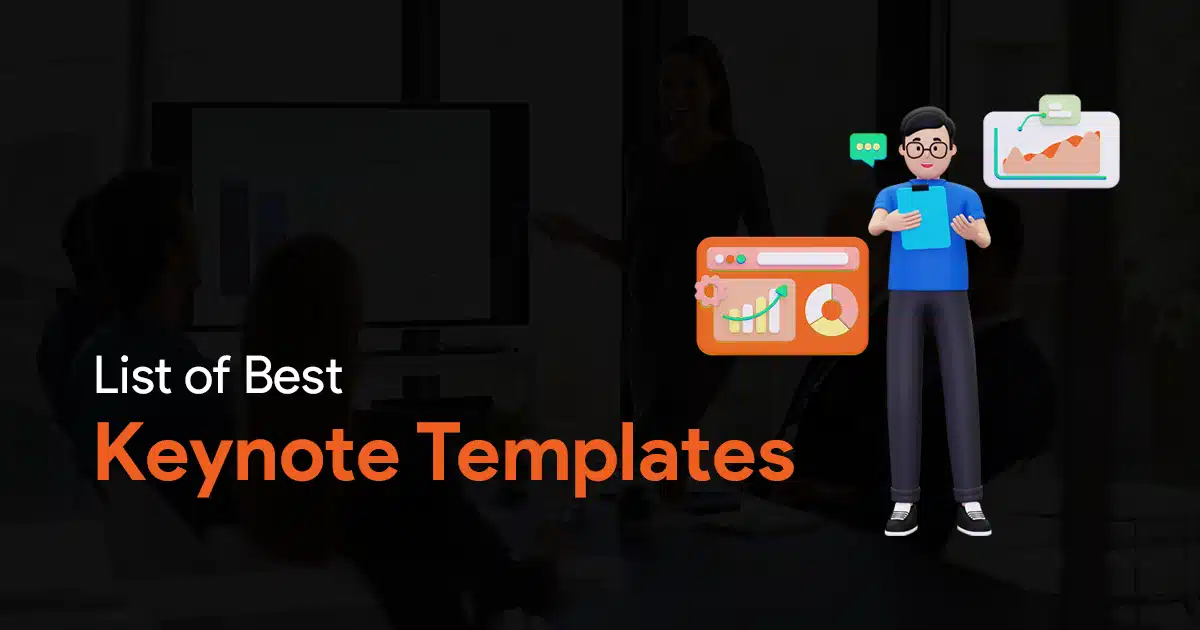- Why Evolving Your Presentation Team Matters Now
- Essential Skills for the Future-Ready Presentation Team
- Training Programs and Learning Approaches for Upskilling Teams
- Resource Needs for Modern Presentation Teams
- Best Practices for Integrating Motion and Video Skills
- Looking Ahead: Preparing for What’s Next
- Conclusion: Building Your Transformation Roadmap
Building a Future-Ready Presentation Team with Emerging Skills in Motion and Video

About the author: Anand is a presentation expert and founder of SlideBazaar, helping professionals create polished presentations through modern templates and design services.
In today’s rapidly evolving business landscape, the art of presentation has transformed dramatically. Gone are the days when static slides and bulleted lists could captivate an audience. As we move further into 2025, presentation teams face a fundamental shift in how they craft and deliver compelling narratives. The integration of motion design, video elements, and AI-assisted content has become not just a competitive advantage but a necessity for effective communication.
As someone who has built and led presentation teams across multiple organizations, I’ve witnessed this transformation firsthand. The most successful teams today aren’t just proficient in traditional design skills they’re multimedia storytellers who can leverage emerging technologies to create immersive, audience-focused experiences.
This evolution presents both challenges and opportunities for team leaders and managers responsible for building, managing, and improving presentation capabilities within their organizations. The question isn’t whether to adapt, but how to strategically transform your team to thrive in this new multimedia-rich environment.
Why Evolving Your Presentation Team Matters Now
The traditional presentation team structure typically comprising designers who create static slides and content specialists who write accompanying scripts is quickly becoming obsolete. As audience expectations evolve and attention spans shrink, teams must pivot toward more dynamic, visually engaging content delivery methods.
Several key trends are driving this transformation:
1. AI-assisted design and content creation is revolutionizing productivity and creative capabilities.
2. Interactive data visualization is replacing static charts and graphs, allowing audiences to explore information in meaningful ways.
3. Video-based storytelling has emerged as the most engaging content format, compelling teams to develop new production skills.
4. Decreasing attention spans necessitate more visually stimulating, concise communication formats.
According to recent research, presentations in 2025 are significantly shorter, with 10-15 minutes emerging as the sweet spot for optimal audience engagement. Additionally, a remarkable 72% of presenters now use AI for content generation, design, and layouts signaling a fundamental shift in how presentation assets are created. (Source)
The modern presenter must now be part technologist, part content creator, seamlessly blending storytelling with technical capabilities to connect with audiences in limited timeframes.
Essential Skills for the Future-Ready Presentation Team
Building a future-ready presentation team requires intentionally developing a blend of technical proficiency and strategic communication capabilities. Here are the core competencies that will define successful teams in this new era:
1. Motion Design Expertise
Motion design has evolved from a nice-to-have skill to an essential capability. Presentations that incorporate subtle movement, transitions, and animated elements consistently outperform static counterparts in terms of audience engagement and information retention.
Key motion design skills include:
– Animation fundamentals: Understanding principles of timing, easing, and motion physics
– Kinetic typography: Creating moving text that enhances messaging
– Transition design: Seamlessly moving between concepts and slides
– Motion infographics: Bringing data to life through animated visualization
Motion doesn’t just make presentations more visually appealing it serves the strategic purpose of directing audience attention and emphasizing key messages in ways static content cannot achieve.
2. Video Production and Editing
Video has become central to effective presentations, with audiences increasingly expecting multimedia elements that break up traditional slide formats. A future-ready team should develop capabilities in:
– Video editing: Cutting, arranging, and enhancing video assets
– Screen recording: Creating product demos and instructional content
– Post-production: Adding graphics, audio enhancement, and color correction
Even simple video elements such as brief customer testimonials, product demonstrations, or team introductions can dramatically increase the impact of presentations compared to text and static images alone.
3. AI-Driven Content Generation and Enhancement
AI has fundamentally changed how presentation content is developed, requiring teams to develop new skills in prompt engineering and AI collaboration rather than starting from scratch for each presentation.
AI is the biggest trend in presentation design in 2025, enabling custom infographics, interactive data visualizations, and seamless integration of multimedia elements like music, video, and GIFs that make presentations more engaging and professional.
Essential AI capabilities for modern presentation teams include:
– Prompt engineering: Crafting effective instructions for AI tools to generate relevant content
– AI-assisted visual design: Using generative AI to create custom imagery and infographics
– Content curation and adaptation: Using AI to repurpose existing content for specific audiences
– Data visualization: Leveraging AI tools to transform complex data into compelling visual stories
Teams that can effectively partner with AI tools gain significant efficiency advantages while maintaining the human creativity that ultimately distinguishes exceptional presentations.
4. Strategic Storytelling
While technology changes rapidly, the human need for narrative remains constant. The most technically impressive presentations still fail without a compelling story structure.
Essential storytelling skills for presentation teams include:
– Narrative architecture: Creating logical, emotionally resonant story arcs
– Audience journey mapping: Designing presentations that anticipate and address audience needs
– Message distillation: Identifying and emphasizing core messages among complex information
– Visual storytelling: Using imagery and design elements to reinforce narrative
Six essential presentation skills for 2025 include audience-centric communication, mastery of storytelling and content structure, and visually clear design all enhanced by AI which customizes content to audience needs and provides feedback. These AI partnerships enable faster, sharper presentations emphasizing empathy and authenticity.
5. Interactive Experience Design
Static, one-way presentations are giving way to interactive experiences that engage audiences as active participants rather than passive recipients.
Key interactive presentation skills include:
– Audience response integration: Building in polls, Q&A elements, and real-time feedback
– Non-linear navigation: Creating presentations that adapt to audience interests and questions
– Interactive data exploration: Enabling audiences to manipulate variables and explore scenarios
– Digital whiteboarding: Facilitating collaborative visual thinking during presentations
Interactive slides that allow audience participation have become essential to standing out in an environment where attention is increasingly difficult to capture and maintain.
6. Audience-Centric Communication
The most technically sophisticated presentation will fail if it doesn’t connect with its specific audience. Future-ready teams develop deep expertise in:
– Audience analysis: Researching and understanding specific audience needs, preferences, and pain points
– Personalization strategies: Adapting content and delivery for different stakeholders
– Empathetic messaging: Creating content that resonates emotionally with viewers
– Cultural intelligence: Adapting presentations for diverse global audiences
This skill becomes particularly crucial as presentations must achieve more impact in less time, requiring precise targeting of content to audience needs.
Training Programs and Learning Approaches for Upskilling Teams
Once you’ve identified the critical skills your team needs, the next challenge is how to develop these capabilities effectively. Several corporate learning trends are particularly relevant to presentation teams:
AI-Driven Learning Experiences
AI doesn’t just transform how presentations are created it’s revolutionizing how teams learn new skills. AI-driven learning platforms now offer:
– Personalized learning paths based on individual skill gaps and learning styles
– Just-in-time tutorials that provide guidance when team members encounter specific challenges
– Practice with feedback through AI analysis of presentations in development
– Skill benchmarking that compares capabilities against industry standards
These AI learning tools can accelerate skill development in technical areas like motion design and video editing, allowing team members to learn through guided practice rather than theory alone.
Soft Skills Development
While technical capabilities are essential, so-called “soft skills” often determine a presentation team’s ultimate effectiveness. Corporate learning trends relevant to presentation teams include AI-driven learning, a focus on soft skills (e.g., communication, emotional intelligence), microlearning, personalized learning, and learning in the flow of work. Developing these skills makes teams stronger and more adaptable to future needs. (Source)
Effective programs for developing these skills often include:
– Storytelling workshops that draw on techniques from film, journalism, and theater
– Communication coaching with recorded practice and feedback
– Audience empathy exercises that help teams understand different stakeholder perspectives
– Collaborative design challenges that build teamwork while developing technical skills
These interpersonal capabilities ensure that technical skills translate into genuinely effective communication.
Microlearning for Continuous Development
Traditional training programs with multi-day workshops are giving way to continuous, bite-sized learning experiences. For presentation teams, effective microlearning approaches include:
– Short video tutorials focused on specific techniques or tools
– Weekly design challenges that build skills incrementally
– Peer review sessions where team members share insights
– Curated resources tailored to immediate project needs
This approach recognizes that skill development happens most effectively when integrated into daily work rather than isolated in separate training events.
Learning in the Flow of Work
The most effective training doesn’t pull team members away from their work it enhances how they approach current projects. Strategies for embedding learning into workflow include:
– Project-based learning that develops new skills through actual deliverables
– Expert coaching during real presentation development
– Retrospective reviews that extract lessons from completed projects
– Skill-sharing sessions where team members teach each other techniques
By connecting learning directly to work outcomes, teams develop capabilities that are immediately relevant and applied.
Cross-Functional Skill Development
Future-ready presentation teams increasingly blur the lines between previously distinct roles. Training approaches that support this integration include:
– Rotational assignments that expose team members to different functions
– Collaborative projects that pair specialists with complementary skills
– Mentorship programs that transfer knowledge across disciplines
– External partnerships with specialists who can train internal teams
This cross-pollination of skills creates teams that can collaborate more effectively across the entire presentation development process.
Resource Needs for Modern Presentation Teams
Building capabilities requires investing in the right tools, technologies, and workflows. Here are the essential resources for supporting a future-ready presentation team:
AI Tools for Design and Content Development
AI has become indispensable for productive presentation teams, offering capabilities that significantly enhance both efficiency and creative possibilities. Key AI resources include:
– AI-powered design assistants that can generate slide layouts and graphic elements
– Content generation tools that create initial drafts from simple prompts
– Image creation and enhancement platforms that produce custom visuals
– Slide development platforms that automate routine design tasks
2025 presentation trends emphasize interactive decks, AI-assisted visuals, clean layouts with negative space, and sustainability in design. These trends recommend avoiding complex data slides and corporate jargon while using AI to create custom textures and images aligned with brand identity for visual uniqueness.
Video and Motion Production Capabilities
Supporting video and motion integration requires specific resources, including:
– Video editing software appropriate to your team’s skill level
– Animation and motion graphics tools for creating dynamic elements
– Stock media subscriptions for accessing quality footage, music, and sound effects
The good news is that professional-quality video production has become increasingly accessible, with many teams achieving excellent results using smartphone cameras and consumer-level editing software.
Collaborative Platforms for Integrated Workflows
Modern presentation development requires platforms that support seamless collaboration across team members with different specialties. Essential resources include:
– Cloud-based design platforms that enable real-time collaboration
– Version control systems for managing assets and iterations
– Digital asset management solutions for organizing and accessing media
– Review and feedback tools that streamline the revision process
These collaborative platforms not only enhance efficiency but also support the cross-functional skill development mentioned earlier by making it easier for specialists to work together.
Presentation Delivery Technologies
The final presentation experience depends not just on content creation capabilities but also on delivery technologies:
– Interactive presentation platforms that move beyond static slides
– Virtual and hybrid meeting technologies that engage remote audiences
– Audience response systems for gathering real-time feedback
– Analytics tools that measure engagement and effectiveness
Investing in these delivery technologies ensures that your team’s carefully crafted presentations achieve their intended impact regardless of audience location or setting.
Best Practices for Integrating Motion and Video Skills
Successfully incorporating these emerging capabilities into your presentation team requires thoughtful implementation. Here are proven approaches for effectively integrating motion and video skills:
Start with Purpose-Driven Implementation
Not every presentation requires extensive motion graphics or video elements. Successful teams adopt a strategic approach by:
– Identifying specific communication challenges that motion or video could solve
– Creating guidelines for when different media types are most appropriate
– Developing templates that incorporate motion elements without requiring extensive custom work
– Building a library of reusable assets that can be adapted for different presentations
This purpose-driven approach ensures that new capabilities enhance rather than complicate the presentation development process.
Establish Progressive Skill Development Pathways
Rather than expecting mastery immediately, create a structured pathway for developing capabilities:
– Begin with simple motion techniques that provide immediate visual impact
– Gradually introduce more complex animation principles as skills develop
– Start video integration with simple talking heads before attempting more complex production
– Provide clear examples of each skill level to guide development
This graduated approach builds confidence while delivering increasingly sophisticated results over time.
Create Cross-Functional Production Teams
Rather than isolating motion and video specialists, integrate them into cross-functional teams:
– Pair traditional designers with motion specialists to enhance existing content
– Include content strategists early in video planning processes
– Bring data analysts together with visualization specialists to create dynamic data presentations
– Involve subject matter experts directly in the content creation process
These collaborative teams ensure that technical capabilities serve strategic communication goals rather than becoming ends in themselves.
Develop Modular Content Systems
Future-ready teams create systems that allow for efficient reuse and adaptation:
– Build animation libraries of reusable motion elements
– Create video templates with customizable segments
– Establish consistent motion principles that can be applied across different presentations
– Design flexible content blocks that can be recombined for different audiences
This modular approach dramatically improves efficiency while maintaining consistent quality across presentations.
Looking Ahead: Preparing for What’s Next
As you build your future-ready presentation team, it’s important to not just react to current trends but position your team to adapt to ongoing evolution. Key areas to watch include:
Immersive Presentation Formats
The line between presentations and immersive experiences continues to blur, with emerging formats including:
– Augmented reality elements that blend digital content with physical environments
– Virtual presentation environments that go beyond screen sharing to create shared spaces
– Interactive simulations that allow audiences to explore scenarios directly
While these technologies may seem advanced today, they represent the natural evolution of the trends already transforming presentation development.
AI-Human Partnership Evolution
The relationship between AI tools and human creators will continue to evolve, with AI increasingly handling routine tasks while humans focus on strategy and emotional connection. Future teams will likely include AI specialists who focus not on creating content directly but on orchestrating AI systems that generate and customize content at scale.
Continuous Measurement and Optimization
Data-driven approaches to measuring presentation effectiveness will become increasingly sophisticated, enabling teams to continuously refine their approaches based on audience engagement and response. Teams that build measurement capabilities now will have significant advantages as these analytics become more central to evaluating communication effectiveness.
Conclusion: Building Your Transformation Roadmap
Creating a future-ready presentation team doesn’t happen overnight it requires a strategic, phased approach to capability development. As you begin this journey, consider these steps:
1. Assess your current state honestly, identifying both strengths to build on and gaps to address
2. Prioritize capabilities based on your organization’s specific presentation needs and audience expectations
3. Develop a phased implementation plan that balances quick wins with longer-term capability building
4. Create feedback mechanisms to continuously measure progress and adjust your approach
5. Celebrate and showcase successes to build momentum for continued transformation
The most successful presentation teams don’t just adopt new technologies and skills they fundamentally reimagine how they communicate through visual media. By thoughtfully building these emerging capabilities, you position your team not just to create more engaging presentations but to transform how your organization communicates its most important messages.
The future of presentations is dynamic, visual, and increasingly interactive. By investing in a future-ready presentation team now, you ensure your organization’s ability to communicate effectively in this evolving landscape turning presentations from obligatory information delivery into genuine opportunities for connection, persuasion, and impact.


